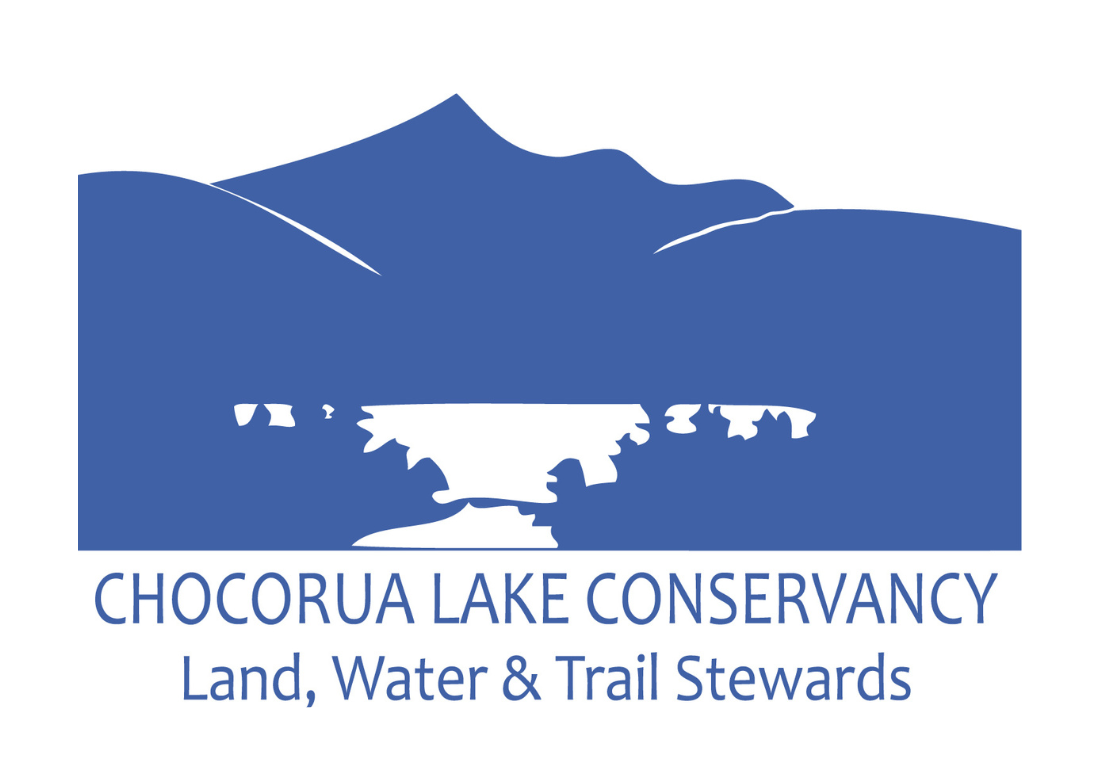Particularly interesting was the effect of Hurricane Irene in late August of 2011 (see page 47) on the lake-water quality as well as the long-term positive effect of installation of best management practices on the eastern shore in 1999.
Wildlife Notes—Spring 2010
by Harriet Hofheinz
Welcome to another anticipated spring. This past winter the Basin seems to have been at peace: not a lot of snow, not a sustained bitter cold, and alas no unusual sightings reported.
Our loon pair has come back, always an anticipated and hopeful event. They are taking up residence in their old haunts. We give them our blessings and wish them well for a productive and successful season. The usual Chocorua mammals have been reported including deer, fishers, otters, coyotes, porcupines, and a few moose. Winter birds too, seem to be holding steady: hairy and downey woodpeckers, chickadees, titmice, sparrows, and an occasional cardinal have come to feeders, but are eating less. Both John and David reported that this year seed consumption was way down. In February, a bald eagle graced our shores on its way further north.
Alice Waylett writes a charming report on the beginnings of spring in Chocorua. “Today, I had a visit from a Great Blue Heron that politely perched on the lake edge right in front of my living room window. The phoebes are searching for nesting sites; please not over my doorway again! I had a great view of a fisher cat early March. It came down my driveway, up the kitchen walk and up on the first step of the porch. It seemed to be sniffing a squirrel track through the new dusting of snow. I watched it for about a minute before it ran off. The usual otter clan was entertaining while the lake was partially covered with ice, and quite noticeably skittering along the edges. My little deer herd, down to three this year, paid several visits when the snow started to recede. I only saw them a few times as the winter was such an easy one that they had ample opportunity to find something edible elsewhere. The Hooded Merganser came by a few times, and for the first time that I have seen, brought along a significant other. I’ve only seen a few Common Mergansers this year. Maybe the loons have sufficiently educated them to gather elsewhere? Our old buddies, the snapping turtles, won’t appear until it gets a bit warmer so they can sun themselves on the rocks. Haven’t seen any moose since last fall when Momma Moose ambled next to my house with her two teenagers. Amazing how near all these critter will come when we have a house in which to hide!”
Wood thrush.
The Thrush Survey will again be held on the weekend of June 19 and 20. This year, I suspect the black flies and mosquitoes will be out in numbers, but we will hope for the best. Please alert me to your bat sightings if any.
Comments and wildlife stories are always welcome. Enjoy your spring and hope to see you soon.
Renovation of "The Grove"
The view of Mt Chocorua from the “Grove”, a piece of private property situated between the Big and Little Chocorua Lakes, has become an icon of scenic beauty for New Hampshire and indeed the Nation. The site attracts tens of thousands of visitors a year who come to enjoy the beauty of the spot, to swim, fish, picnic, and launch non-motorized water craft. The Grove had, however, become badly worn over the years due to the heavy foot traffic it receives. Shoreline erosion, root exposure and soil compaction around the base of the tall pines was threatening the very reason why so many people to by this scenic landmark.
To address this problem, members of the Chocorua Lake Conservation Foundation (CLCF) and the Chocorua Lake Association (CLA) got together and wrote two grant proposals to the New Hampshire Moose Plate Program. One was funded in 2008 for a total of $30,000 and the second in 2009 for $23,128. This money was used to hire a landscape designer (Zachary Berger Associates), a tree and plant specialist (P. C. Hoag and Co.) and an engineering firm that specializes in shoreline stabilization (Certified Erosion Control – NH).
Work to restore the beauty of the Grove began in the fall of 2008 is now about complete. The initial work included the development of a landscape plan and the obtaining of a Wetland Permit from both the New Hampshire Department of Environmental Services and the Town of Tamworth.
Planting of new vegetation to better define walking areas began in the fall of 2008 and has continued into the spring of 2009. In addition, use of a new technology (Filtrerxx socks) has been employed to stabilize the shore. Many large boulders have also been set in place to provide sitting areas for visitors and to help direct people along pathways to the water.
It is realized, however, that this restoration effort is just the beginning of an ongoing effort to maintain the Grove’s intrinsic beauty.
Conditions in the Grove will have to be monitored regularly to include the removal of nonnative weeds from the newly planted areas, the watering of the new vegetation, the addition of mulch to reduce soil compaction and,most of all, the education of the public as to the fragile nature of site and the work that is being done to preserve it for future generations.




